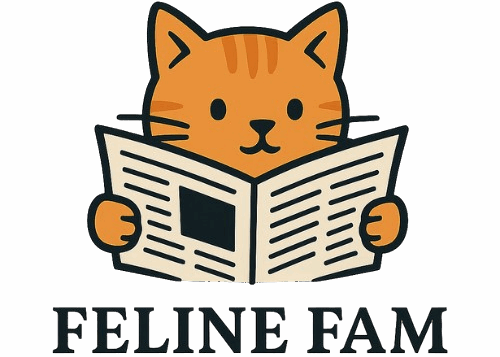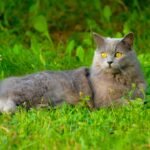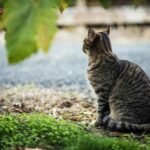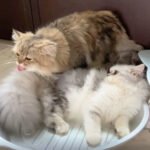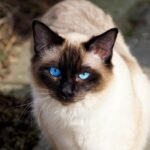Maine Coon cats are truly fascinating creatures that go far beyond their impressive size and majestic appearance. These remarkable felines have captured the hearts of cat lovers worldwide, yet many surprising facts about them remain hidden from even dedicated pet enthusiasts.
While most people recognize these cats as gentle giants with their flowing coats and imposing stature, the Maine Coon breed holds secrets that showcase their remarkable intelligence, unique abilities, and extraordinary adaptations. From their mysterious origins to their unexpected behaviors, these cats continue to surprise researchers and owners alike.
They Possess a Nearly Waterproof Coat

The Maine Coon is waterproof! It has a waterproof topcoat that protects them against wet and bleak climates. This incredible adaptation sets them apart from virtually every other domestic cat breed. Their thick, partially water-resistant coats are longer on the stomach, ruff, and flanks and help keep their lower body warm when they sit or walk across snow or ice, giving them an advantage in the cold winter months.
The Maine coon’s tufted ears and paws, water-resistant coat, and long, bushy tail are thought to be adaptations to the area’s cold, harsh climate, making them natural survivors in New England’s brutal winters. This remarkable coat design explains why many Maine Coons actually enjoy water activities, unlike most other cats who despise getting wet.
Up to 40% Were Born With Extra Toes

They are polydactyl cats which means that they have more toes than average cats. This also means that their paws are snowshoe-like, which also helps them navigate extreme snowy conditions. Experts estimate that a significant percentage of early Maine Coons were polydactyls, which some people said helped the cats use their paws as “natural snowshoes” during snowy Maine winters.
The gene for extra toes is dominant, which means a polydactyl cat has a 50% chance of passing the Pd gene on to their potentially well-heeled offspring. Maine coon fans think the extra toes help the cats pad through snow, catch mice, and climb around on ships better than the average cat. This trait was so common that it became associated with the breed’s seafaring heritage.
They Can Hold World Records for Size

Maine Coons are known as ‘gentle giants’ and are the largest domesticated cat breed. They can be up to 8kg heavier than the average domestic cat. The longest registered cat was 48.5 inches long and was, of course, a Maine Coon named Stewie. The Guinness World Record for the longest tail ever recorded on a domestic cat was awarded in 2016 to a Maine Coon named Cygnus, whose tail measured in at 17.58 inches (44.66 cm) long. For comparison, the average tail length for a domesticated cat is 12 inches (30.48 cm).
Their incredible size isn’t just impressive to look at – it serves practical purposes. The most unique feature about the Maine Coon cat is, of course, its bushy tail, which is normally the same length as its body; you’ll often find that they wrap their tails around their body to keep warm! These magnificent proportions make them living, breathing record-breakers among house cats.
They Communicate With Chirps Instead of Meows

Maine Coons are ‘chatty’ cats, but they often make a different noise to a meow, such as a chirp or a trill. These cats communicate with a peculiar chirping sound, very unlike the familiar feline meow. They purr, like other cats, but they also make a chirping sound instead of a typical meow. Your Maine Coon will chirp to get your attention and alert you of their needs – whether they’re happy, hungry, excited, or distressed.
This unique vocalization pattern makes living with a Maine Coon feel like sharing your home with a gentle bird-cat hybrid. Their chirping creates a distinctive conversation style that owners quickly learn to interpret, making communication between human and cat remarkably nuanced and personal.
They Take Up to Five Years to Fully Mature

They grow slowly and don’t reach full size until they are around five-years-old. While most cats take approximately a year to physically mature, Maine Coons typically only reach their full size when they are three to five years old. This extended growth period means owners get to enjoy an exceptionally long kitten-like phase.
Maine Coons have a naturally slow growth rate and don’t reach their full size until they are about 3 to 5 years old. They are a very friendly breed, enjoying human company and animals alike. This prolonged development contributes to their gentle nature, as they maintain playful, curious personalities well into their adult years, creating lifelong companions who never fully lose their youthful spirit.
They Made History as the First Cloned Pet

In 2004, a kitten named Little Nicky went down in history as the first known sale of a cloned pet. This groundbreaking scientific achievement put the Maine Coon breed at the forefront of genetic research and pet cloning technology, marking a significant milestone in both veterinary science and pet ownership history.
Beyond their cloning fame, Maine Coons have also starred in popular culture. In the Harry Potter films, multiple Maine Coon cats were used to play Mrs. Norris! That’s Mrs. Norris – the Maine coon companion to the castle’s caretaker, Argus Filch. Unlike the typically well-groomed and sturdy Maine Coon cat, however, J.K. Rowling described Mrs. Norris as a scrawny and messy cat in her books. Their intelligence and trainability make them natural performers in entertainment.
Conclusion

Maine Coon cats continue to amaze us with their remarkable adaptations, record-breaking abilities, and unique characteristics that set them apart from every other domestic cat breed. From their waterproof coats to their chirping conversations, these gentle giants prove that there’s always more to discover about our feline companions.
Whether they’re using their extra toes as natural snowshoes or taking five years to reach their impressive full size, Maine Coons demonstrate that evolution has crafted them into truly exceptional creatures. What surprises you most about these magnificent cats? Tell us in the comments.
